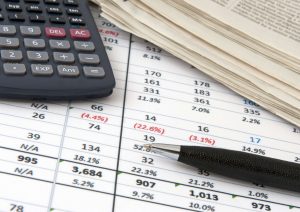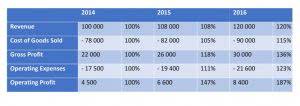
Adjusted Trial Balance is the one that records all the company accounts after the adjusting journal entries have been made at the end of the accounting period. This step of the process is pretty straightforward because you already have the needed data on the adjusted trial balance. The adjusted trial balance has all of the data your business needs to prepare financial statements. The eight-step accounting cycle process makes accounting easier for bookkeepers and busy entrepreneurs. It can help to take the guesswork out of how to handle accounting activities.

The third document is the balance sheet, where you display assets, liabilities, and owner’s equity. It tells you whether or not the business has enough assets to meet its financial duties. Its purpose is to show you how much profit the business has generated. From that answer, you then evaluate how well your business performed in that accounting period. A prepaid expense is when you pay now for a future asset, like insurance.
Automating the accounting cycle with accounting software
The fundamental concepts above will enable you to construct an income statement, balance sheet, and cash flow statement, which are the most important steps in the accounting cycle. To learn more, check out CFI’s free Accounting Fundamentals Course. Prepare a preliminary trial balance, which itemizes the debit and credit totals for each account.
The use of software introduces a high degree of control over the accounting cycle, so that transactions can only be recorded if they are made in accordance with the rules set up within the software. This approach is also more efficient than a manual accounting system, requiring significantly less labor per transaction. The accounting cycle is a comprehensive accounting process that begins and ends in an accounting period. It involves eight steps that ensure the proper recording and reporting of financial transactions.
Timing of the Accounting Cycle
According to the rules of double-entry accounting, all of a company’s credits must equal the total debits. If the sum of the debit balances in a trial balance doesn’t equal the sum of the credit balances, that means there’s been an error in either the recording or posting of journal entries. Now that all the end of the what is the accounting cycle year adjustments are made and the adjusted trial balance matches the subsidiary accounts, financial statements can be prepared. After financial statements are published and released to the public, the company can close its books for the period. Closing entries are made and posted to the post closing trial balance.

The usual types of accounts include cash, equipment, prepaid insurance, drawings, service revenue, rent expenses, and more. We already learned that the accounting cycle keeps your documents neat and orderly. This allows you to have accurate and professional recordings of your finances. To avoid these issues, your finances need to go through what’s known as the accounting cycle.
Step #6: Adjust journal entries
Skipping steps in this eight-step process will likely lead to an accumulation of errors. If these errors aren’t caught and corrected, they can give you and your employees an inaccurate view of your company’s financial situation. At the start of the next accounting period, occasionally reversing journal entries are made to cancel out the accrual entries made in the previous period. After the reversing entries are posted, the accounting cycle starts all over again with the occurrence of a new business transaction. Analyzing the worksheet reveals unrecorded credit for Accounts Receivable and unrecorded debit for Accounts Payable. Adjusting journal entries correct these issues, ensuring accurate records and compliance.
Aligning climate scenarios to emissions inventories shifts global … — Nature.com
Aligning climate scenarios to emissions inventories shifts global ….
Posted: Wed, 22 Nov 2023 16:02:41 GMT [source]
Next, you’ll break down (or analyze) the purpose of each transaction. For example, if a receipt is from Walmart, was it office supplies? Without them, you wouldn’t be able to do things like plan expenses, secure loans, or sell your business. This process maintains updated, precise records for analysis, decision-making, and reporting, facilitating a seamless transition to the next period.
Finally, if your books are disorganized, you might provide inaccurate information when filing taxes. Some textbooks list more steps than this, but I like to simplify them and combine as many steps as possible. The Balance Sheet reveals the financial snapshot at a specific time, listing assets, liabilities, and shareholders’ equity to illustrate resource allocation.

At the end of an accounting period, Closing entries are made to transfer data in the temporary accounts to the permanent balance sheet or income statement accounts. This is the last step before preparing financial statements of the company. Therefore, all the accounts appearing in the adjusted trial balance will appear on the financial statements.
The Role of Accounting Software and Manual Intervention
Here are our transactions from the adjusted trial balance displayed in all four statements. It’s called a cycle because these steps are standard and they repeat themselves at the end of each accounting period. An accounting period usually corresponds to the business fiscal year.
- Once a company’s books are closed and the accounting cycle for a period ends, it begins anew with the next accounting period and financial transactions.
- So, these series of steps or stages are what constitute Accounting Cycle.
- Some textbooks list more steps than this, but I like to simplify them and combine as many steps as possible.
- To learn more, check out CFI’s free Accounting Fundamentals Course.